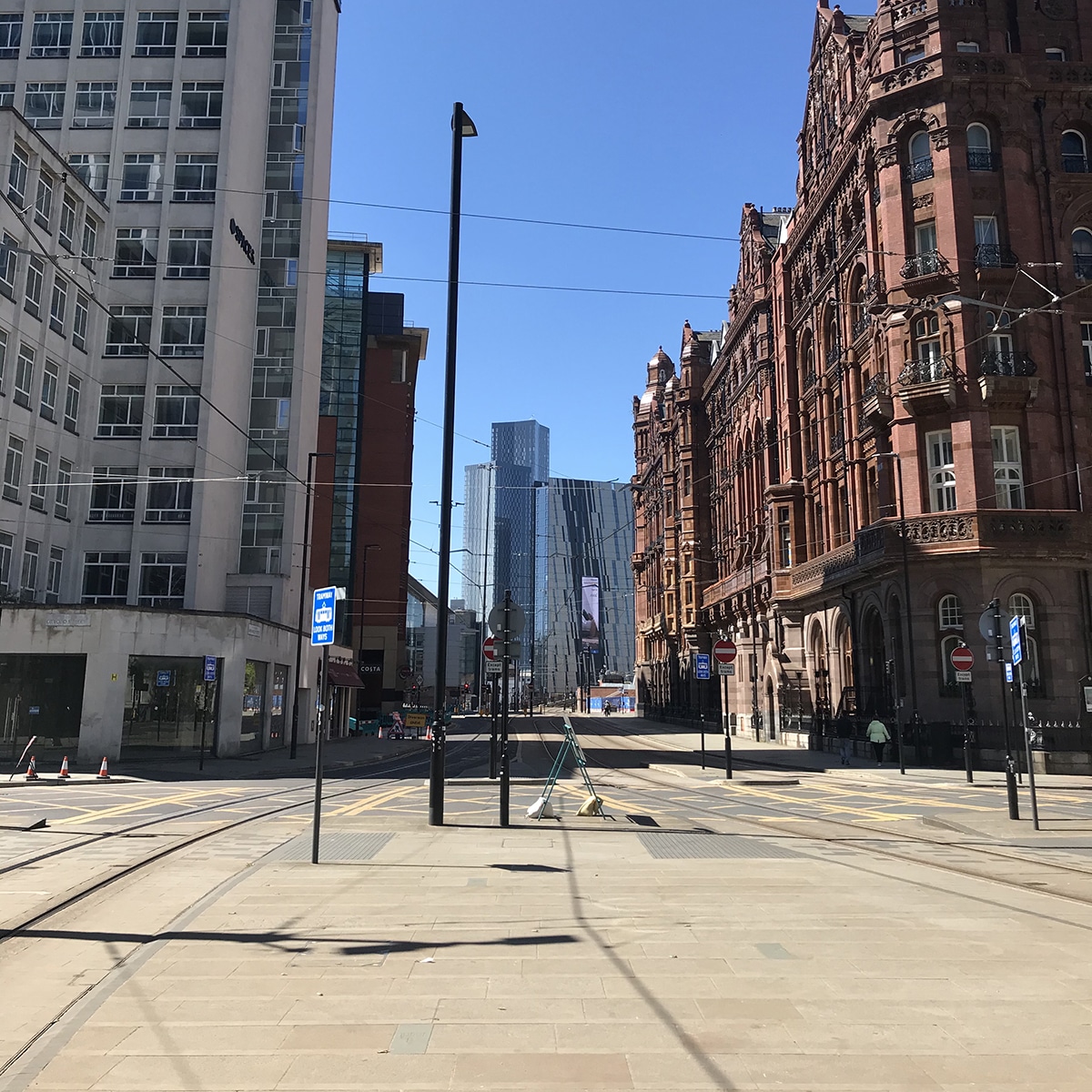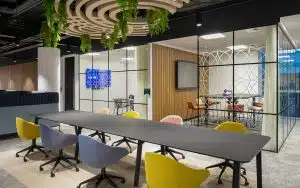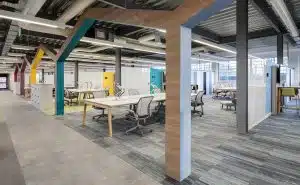With the Government starting to ease restrictions, people across the nation are preparing to get back to work. For management teams who 11 weeks ago had to rapidly introduce home-working strategies almost instantaneously, the task is now to adapt their premises quickly, so they can safely start welcoming people back to a Covid-secure workplace.
Although many media reports would have you believe that the ‘office is dead’ and that people will no longer want to work from an office when it has been proven that working from home is possible, there is much research to suggest otherwise. Most recently, a report from the BCO suggested that just 16% of UK adults hope that the office is permanently replaced by working from home. The human sense of propinquity also plays a huge factor in our desire and need to be in the office for at least some of our working time. Propinquity is a psychological theory that refers to the human desire to be close to others. It exists at the heart of every team, every social bond and every intimate relationship we have, and is why the physical workplace matters as much as it does. So while often productive and effective, prolonged periods of working from home can also have drastic side effects on our cultural bonds, due to loss of connection and feelings of loneliness.
The possibility of opportunity
In order to create safe workplace environments for our people to return to, there is no doubt that challenges lie ahead. But in any challenge there is the possibility for great opportunity. In fact, historically periods of significant change or ‘renaissance’ have followed periods of crisis such as recessions, wars or pandemics like the one we’re experiencing now.
So for businesses looking at how to adapt their workplaces, you have a unique chance to hit the reset button, get rid of what doesn’t work, build a resilient culture and make improvements to your business. At ADT Workplace, we’re certainly grateful for the time that Covid-19 has given us to pause, learn and reflect, and are looking forward to embracing the changes and opportunities that lie ahead when creating our own Covid-secure workplace, as well as supporting our clients in creating theirs.
Immediate impact
When Covid-19 suddenly hit, businesses across the country rushed to shut down offices and sites, and now we’re seeing organisations debating the need to completely redesign their entire workspace in a bid to re-open. But if this pandemic has taught us anything, it’s that we can’t predict the future – we can’t even predict next week. Currently, we don’t have enough data to make an accurate prediction on what will be required 12-18-24 months from now (and beyond), so for now, the first phase of resuming office life will involve making basic changes to keep people safe and allay their health fears.
Businesses can heed advice from those in our history who successfully adapted following Spanish flu. After this, businesses shared advice around careful ventilation, public health posters were exhibited outlining advice on preventing the spread, stricter cleaning regimes were introduced using formaldehyde based cleaning products in between shifts, and hand wash basins were introduced in reception areas.
It’s obvious to say that space will need to be used differently and redesigned to support physical distancing among colleagues and as a result, interaction and communication between colleagues will also be impacted. To avoid overcrowding while the infection rate continues to decline, it’s likely most businesses will have to introduce staggered working patterns for ‘bubbles’ or ‘teams’ of employees, for example, 30% in the office and 70% working from home or 40% vs 60% on typical floorplan. The question is whether over time we will see organisations downsizing to allow for more staff to work from home, or whether we will see companies taking more space to keep staff together but still safe?
We’re also likely to see touchless technologies starting to have a greater influence within offices including voice recognition, sensor taps, retinol scanners, automatic doors and fob systems, coupled with building managers potentially having more ownership over things such as booking lifts to reduce high touch points. Personal storage such as lockers, which are already in place in many agile offices will continue to be important to avoid cross contamination, and clear desk policies are likely to be the norm to aid efficient cleaning.
But with so much uncertainty around the future of Covid-19, there is quite simply no one size fits all solution, meaning flexibility and preparedness are both key as we move forward into the unknown.
Empowering your people to embrace the new workplace
What is certain is that it is likely teams will be dispersed across multiple locations for some time to come. But whether people are in the office or at home, it is crucial they still feel empowered by their work environment, if your business is to overcome this period of uncertainty. How will you make your people feel like they are still an integral part of your organisation and connected to their team? How will you go about monitoring work-streams and productivity? Establishing clear and regular lines of communication will be crucial to demonstrate trust and provide empowerment, whilst ensuring output and efficiency is visible.
Although working from home brings new benefits including work life balance and higher productivity, it can also bring its challenges. Mental health and wellbeing all play a key factor in a person’s happiness, and working alone from home has the potential to impact this. While employee wellbeing has become an increasingly hot topic over the past 5-10 years, it is more important now than ever before. Do you have an employee wellbeing programme? Is there the help in place to support your people from home and in the office? Employees are the backbone to organisation and their happiness is the key to success.
Moving forwards
It’s important for business owners not to lose sight of the huge importance of the workplace, and the impact this could have on long-term business success. Yes, working from home is currently a reality for the majority of us, but with careful planning there are ways to make office environments Covid-secure. Workplaces don’t need to be empty to be safe.
A clear back to work protocol should be developed and communicated to ensure your entire team feels safe, comfortable and importantly, empowered to come into the office. As well as this, now is the time to be creative – It’s about restructuring business and reimagining the space in order to create a socially-distanced, safe and intelligent workplace which is still a fun, collaborative and engaging place to be.




